Application of optimized BP neural network in electronic equipment fault diagnosis
In recent years, due to the development of computer technology, signal processing, artificial intelligence, and pattern recognition technology, the continuous development of fault diagnosis technology has been promoted. The emergence of large and complex electronic equipment has made people more eager to improve overall reliability and maintainability. , Which puts higher requirements on fault diagnosis. Therefore, research on fault diagnosis technology has important theoretical and practical significance.
1 BP neural network fault diagnosis model
When a neural network is used for fault diagnosis, it mainly includes three layers: the input layer, which receives various fault information and phenomena from the device object; the middle layer is to convert the fault information obtained from the input layer through internal learning and processing, and convert it It is a targeted solution; the output layer is a fault handling method obtained after adjusting the weights for the input fault form. For a new input state information, the trained network will give the fault recognition result from the output layer. BP neural network fault diagnosis model is shown in Figure 1. 
2 Optimization of BP neural network-conjugate gradient method
Although the neural network model has been successfully applied in the fields of pattern recognition, function approximation, time series prediction, etc., because the BP learning algorithm only changes the connection value and threshold of the network, and does not change the topology of the network, the BP network still has There are shortcomings such as slow convergence and easy to fall into local minimum. In order to solve the shortcomings of BP network training, people have proposed a variety of beneficial improvements.
In this paper, the conjugate gradient method is used to optimize the design of BP neural network. The basic idea is as follows:
The traditional forward multi-layer network BP learning algorithm is essentially the unconstrained steepest descent method. The improved BP algorithm makes some constraints on the steepest descent method; the conjugate gradient method is between the steepest descent method and the Newton method. A method, it only needs to use the first-order derivative information, which not only overcomes the shortcomings of the slow convergence of the BP learning algorithm, but also avoids storing and calculating the second-order derivative information required by the Newton method. The calculation steps of the conjugate gradient method are not much different from the steepest descent gradient method. The main difference is that the search direction is different, that is, the direction of each step is not the negative direction of the gradient, but a conjugate direction. The conjugate direction is obtained from the original negative gradient direction plus a correction term, that is, the steepest descent method is conjugated, thereby improving the effectiveness and reliability of the algorithm. The purpose of the conjugate gradient method applied in the neural network is to find the minimum value of the error function E (W). The algorithm mainly uses the conjugate gradient direction to modify the weight W, which makes the determination of W faster. The calculation process is as follows;
(1) Initialize the weight value W1, let k = 1;
(2) Calculate the negative gradient vector of the network:
Let p1 = r1 = -E '(W1), where E' (W1) is the negative gradient calculated by the BP algorithm.
(3) Calculate the step size ak: ![]()
Where: En (W1) is the second derivative of the error function to the weight vector W.
(4) Adjust the weight: 
(5) If the remainder of k divided by the number of samples N is zero, pk + 1 = rk + 1, otherwise calculate the new search direction: ![]()
(6) If the gradient direction ∣rk∣> ε, then set k = k + 1, otherwise stop, Wk + 1 is the vector of weights sought.
3 diagnosis examples
An electronic device is now used as a diagnostic object to verify the optimized BP neural network algorithm. The sample data is obtained from the test port test, a total of 6 test points, 10 board failures. The diagnostic steps are as follows:
(1) Fault feature extraction
Table 1 is the sample data of the faults measured in the experiment; Table 2 is the normalized data, and its activation function uses the S-type function f = 1 / (1 + e-ax); Table 3 is the target output mode of the neural network 1 means there is a fault, 0 means normal. 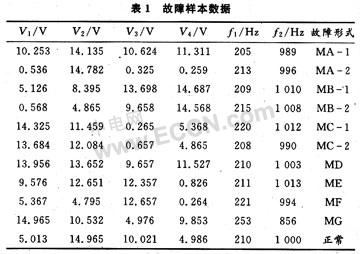

(2) Training of BP network
Take input node N1 = 6, output node N3 = 11, use hidden layer node ![]() , A takes 1 ~ 10, in this experiment a takes 7 (adjusted according to the training error curve), N2 = 15. The learning rate η = 0.2, the training error E <0.005, and the maximum training times n = 1 000. Figure 2 shows the training error curve of the BP network.
, A takes 1 ~ 10, in this experiment a takes 7 (adjusted according to the training error curve), N2 = 15. The learning rate η = 0.2, the training error E <0.005, and the maximum training times n = 1 000. Figure 2 shows the training error curve of the BP network. 
(3) Analysis of BP network recognition results
â‘ Input the sampled data into the trained neural network, and the recognition results are shown in Table 4. Comparison and analysis with the failure mode shows that the correct rate of self-data detection is 100%. It can be seen that the network meets the training requirements.
â‘¡The test data of any 4 groups is shown in Table 5, and the recognition results are observed. Table 6 is the normalized test data, and Table 7 is the recognition result. Compared with the failure mode, the failure corresponding to the first group of data is MA-1; the failure corresponding to the second group of data is MB-2; the failure corresponding to the third group of data is MD; and the failure corresponding to the fourth group of data is MG. It can be seen that this network can not only identify the failure of the sample itself, but also accurately diagnose data failures outside the sample. 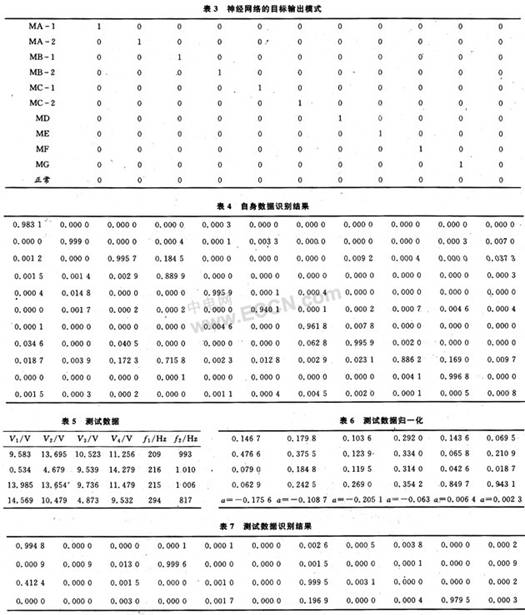
4 Conclusion
The BP neural network in this experiment uses the conjugate gradient method to optimize the design. From the experimental data, the network can accurately diagnose the fault state of the data. It can be seen that this method can be successfully applied to the fault diagnosis of the device. Fault diagnosis is a very practical technology, so its value can only be reflected in practical applications. Although there have been many advances in theoretical research, there are still few examples of successful applications in engineering practice, so How to apply advanced fault diagnosis theories and methods to practice still needs further research.
The positive active material is mainly made of nickel, and the negative active material is mainly an alkaline battery made of hydrogen storage alloy.Nickel-metal hydride (nimh) batteries are modified from nickel-cadmium (nicd) batteries, which offer higher capacitance, less obvious memory effects, and lower environmental pollution at the same price.The special charger can be used for quick charging in one hour. The self-discharge characteristic is better than nickel-cadmium battery, which can be retained for a longer time after charging and can be repeated for more than 500 times.
The charger adopts high frequency switching rectifier power-supply module. The working process of the charger is controlled by microprocessor in real-time, automatic power on/off, simple operation, safe and reliable. The user can view the operation parameters and working status through the touch screen.
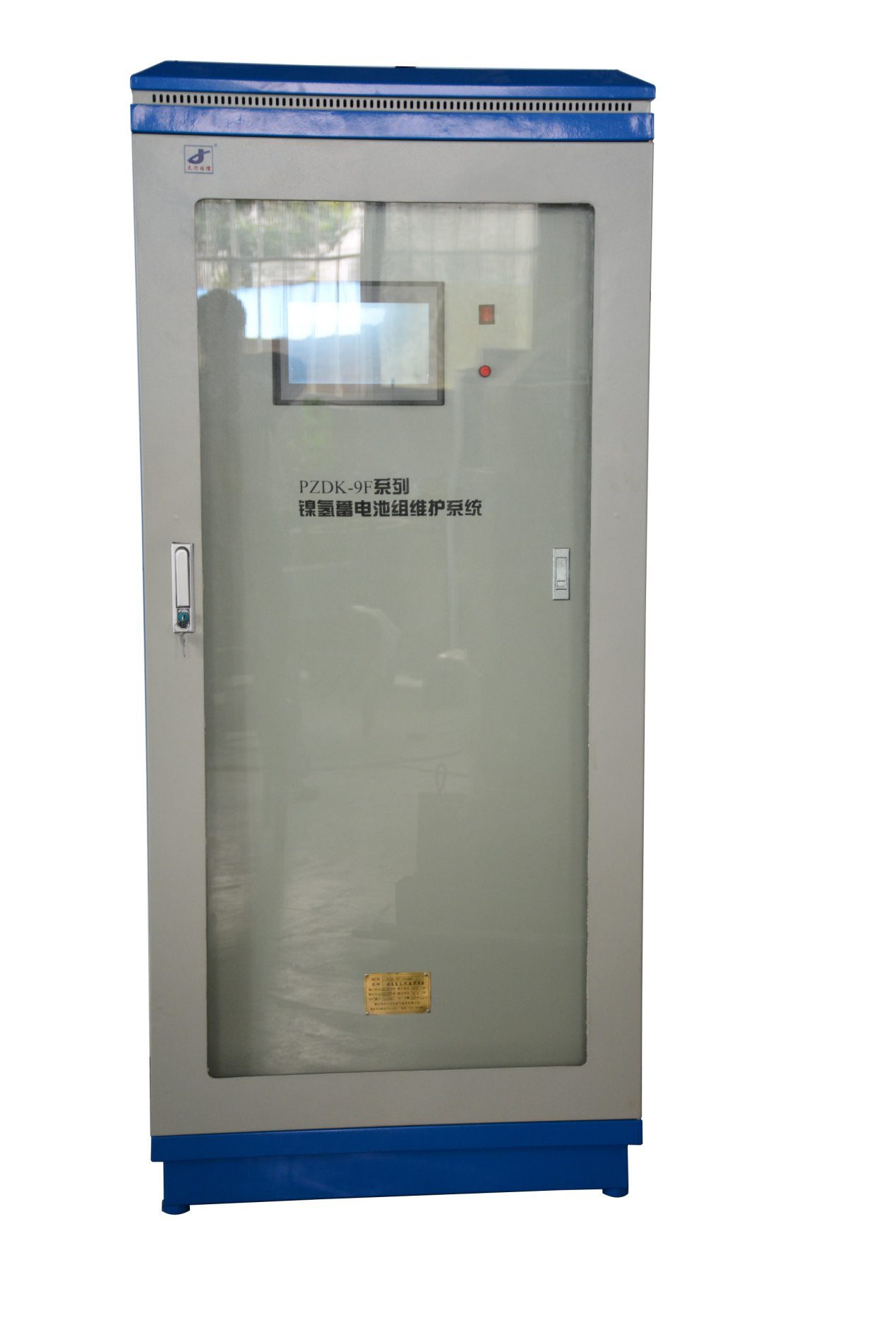
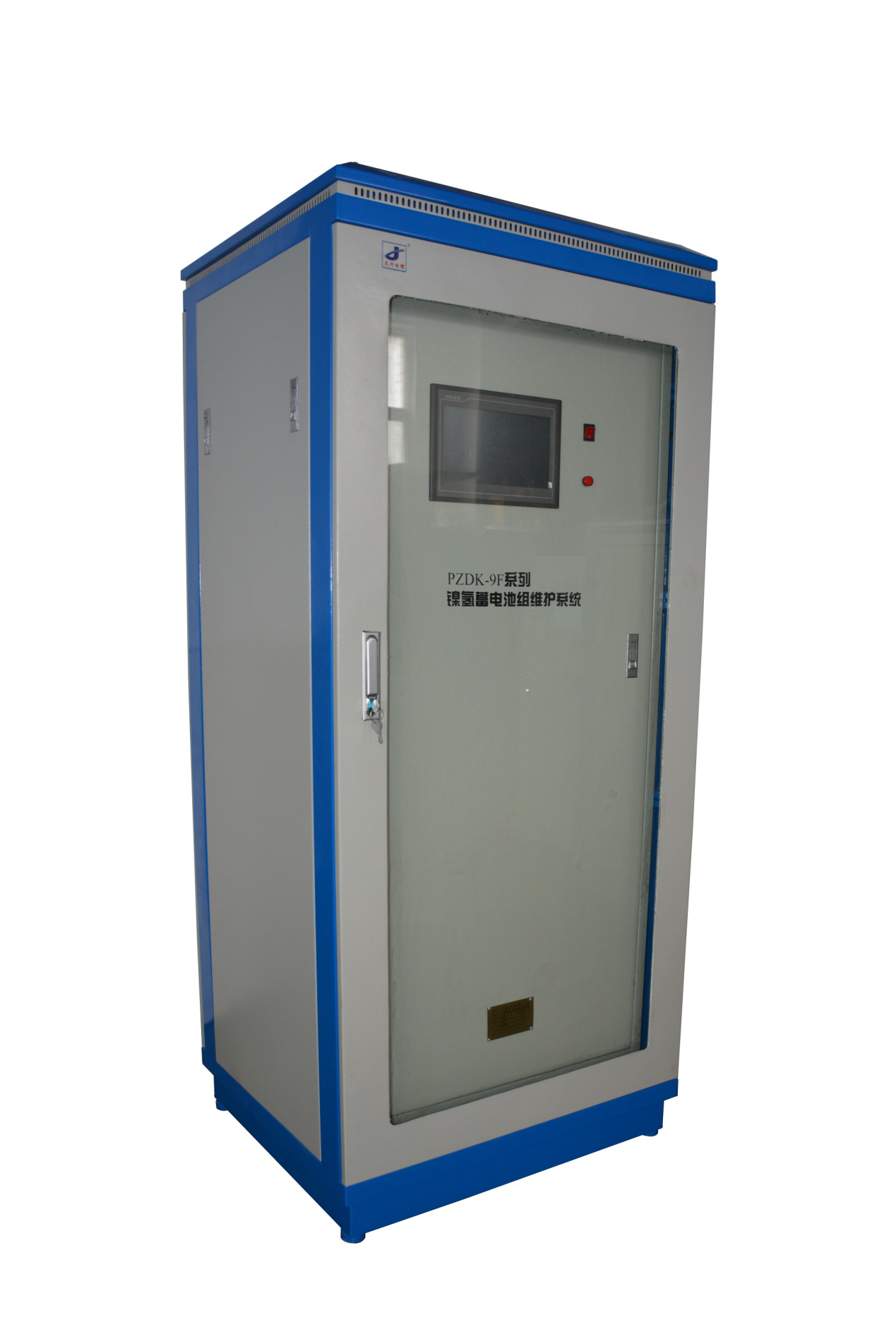
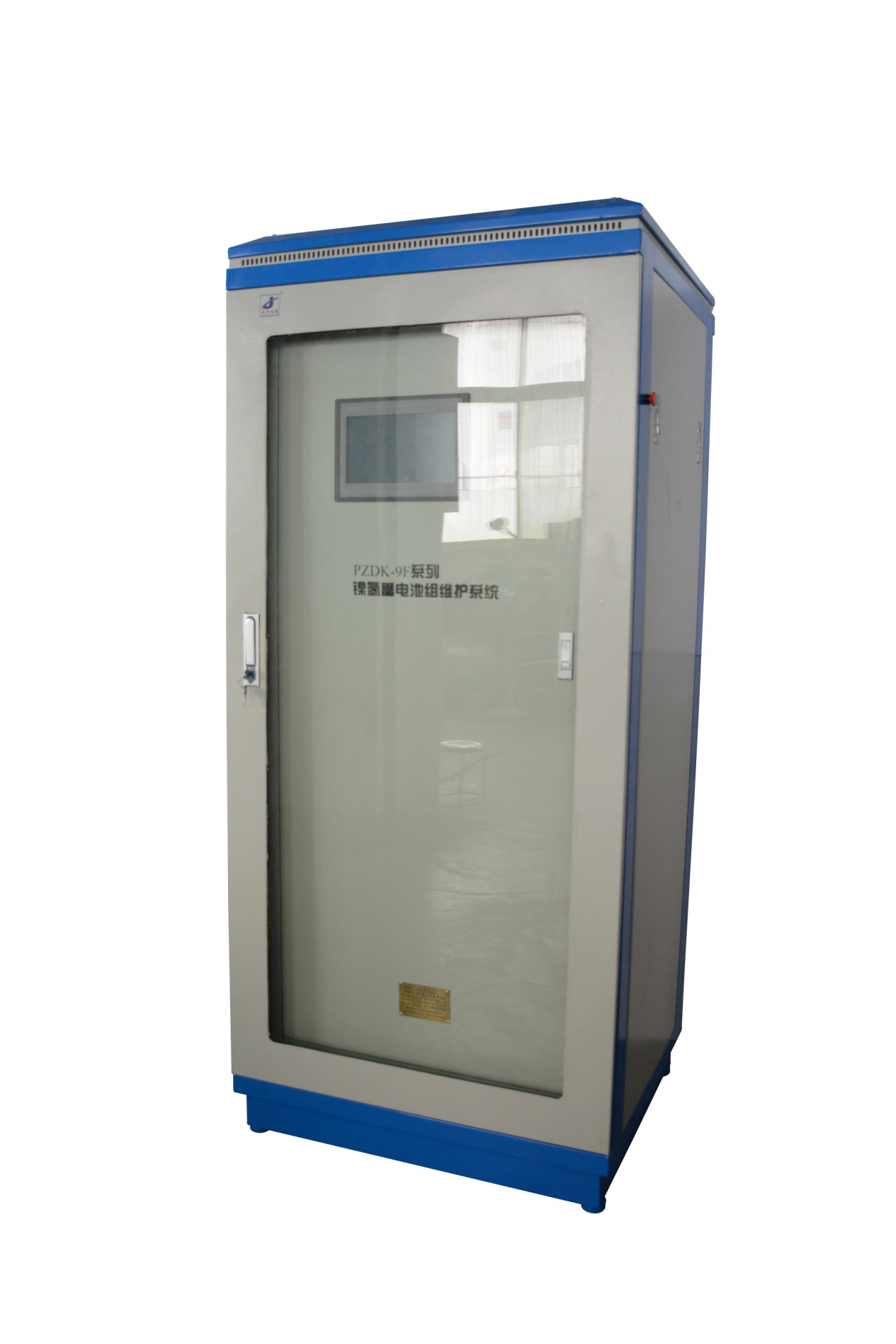
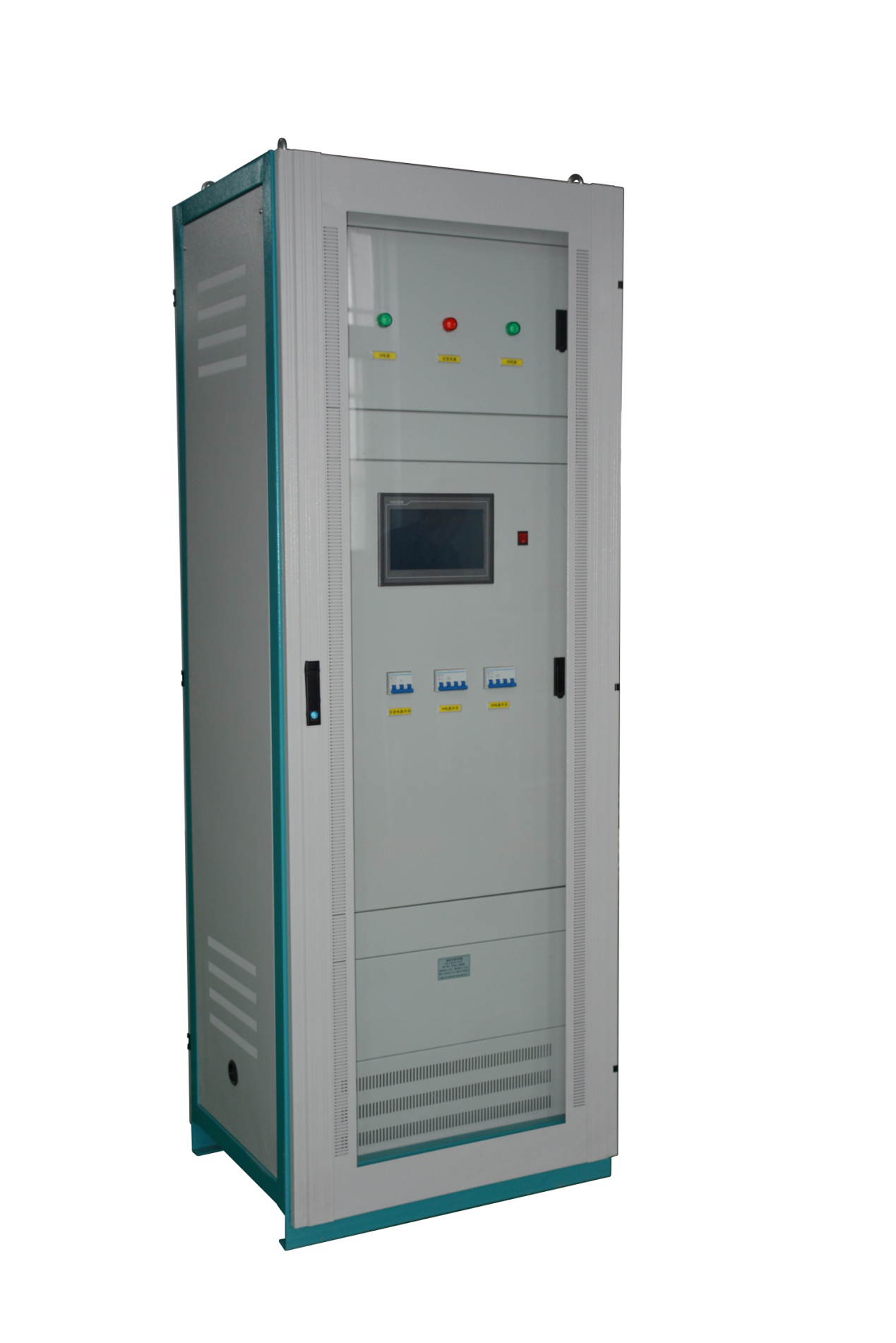


Nimh Battery Charger,Industrial Battery Charger,Substation Battery Charger,Nimh Battery Pack Charger
Xinxiang Taihang Jiaxin Electric Tech Co., Ltd , https://www.chargers.be